Lafayette Anticipation associate curator Anna Colin talks to artist Tyler Coburn about Ergonomic Futures, a speculative project engaged with art, design, science, anthropology and writing. In this interview, Coburn discusses the research, production process and network of collaborators of a multilayered project ultimately concerned with the futures of humankind. Anna Colin: When one comes across your museum seats Ergonomic Futures (2016—) in contemporary art exhibitions—and soon in natural history, fine art, and anthropology museums—they look… [read more »]
D+M Knockoff
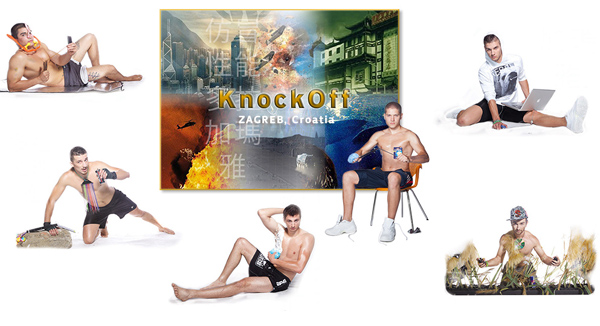
Croatian-born artist duo Dora Budor and Maja Cule (otherwise known as D+M) share a studio in New York where they collaborate on all kinds of mixed and new media projects and performances that incorporate advertising and modeling imagery, product design, and manipulations of bodies and cultures. Coming from a design background, their work is influenced by the methodology and psychology behind the creation of products and advertising. Their practice of data-moshing, DJing, and appropriation takes universal and corporate elements and behavioral patterns from contemporary environments and remixes them into experiences that provide personalized actualities for viewers.
In their most recent performance, KnockOff (2012), D+M worked with local mixed martial arts fighters from three different cities to produce a live remake and “making of” an action movie based on the phenomena known in the movie industry as the “mockbuster.”
D+M’s new show opens at Stadium opens on 13th of December.

Courtney Malick: So, how did this project get started?
Maja Cule: We started working on this project during a residency at Tanzfabrik Uferstudios in Berlin, which is a big factory building turned into performance spaces that houses contemporary dance projects. But we never wanted to do a dance-based piece. We were looking for something closer to reality, trying out various forms of interacting with audiences and researching the “making of” footage of blockbuster movies.
Dora Budor: We lived in Wedding, which is in the northern part of Berlin and is not as gentrified. The area is mostly full of Turkish communities and young artists since it is still very affordable to live there. I remember when I moved to Berlin for a few months in 2010, on my first night there a bunch of drunk Turkish teenagers tried to attack me on the street in front of what would a year later become an artist bar called Times, run by our friends and artists Max Pitegoff and Calla Henkel and Lindsay Lawson. It is a pretty amazing place where you can meet everyone, and that is where we first met Helga Wretman, artist and professional stuntwoman, and DJ and musician M.E.S.H., who both worked with us on this project.
CM: How did you find the men that participated in KnockOff? Did you do a casting?
DB: These guys are Turkish immigrants who meet up at an MMA fight club and work as a security guards in this amazing strip club next to Deutsche Oper that has a Las Vegas vibe to it, called Tabu Bar. They even print their own money called “Tabu dollars” because Euros slip when you try to tuck them into panties.
MC: We actually heard from one dancer that there is a fight club nearby and went to meet them. We spent five days trying to get the men there interested in working with us, which was a challenge, but it worked out.
DB: We told them in bad German that we were making an action movie because it was easier to explain. Helga showed them some pictures of herself working as a child actor’s stunt double where she jumps from cars and buildings. One of the guys said I look exactly like his girlfriend and showed us picture of a virtual girl on his phone. It took us some time to find a common ground and gain trust.
DB: In Bergen we did few castings. One was with an acting group, then we went on some weird trip with some Viking LARP people, and we also found some guys in various mixed martial arts clubs in the city. We were looking to compile a group that would consist of different “action” characters. There was an aspiring filmmaker, an actor, a policeman, an electrical engineer that works with big ships in Norway, and one guy was only 19.

CM: Were they hesitant about working with you or did they just not understand? Did they have some performance experience?
DB: Yes, well some of them did. One of them was a breakdancing champion, and some of them participated in organized street fights in front of an audience. In terms of innate violence of Darwinian evolution, in which better-adapted organisms replace those less able to cope, they have developed their own world where they operate within a very specific set of underground politics. Coming from a different social background, we may at first see this as an exotic ghetto culture, but there is much more to it than that. The respect and justice that exists there seemed to have much more common sense than that of passive aggression and the super organized, bureaucratic German society. Also, their relation to violence was very “healthy,” if we can speak in those terms. They know exactly where it comes from and how to deal with it in everyday life and how to keep it under control.
MC: The question of violence as a natural behavior or a behavior that we have adopted is, in certain anthropological schools of thoughts, such as Bacciagaluppi, said to have emerged out of humans living closely together and the hierarchies that developed out of agriculture and the domestication of animals. So in that sense violence is learned, and then over time it is learned how to be harnessed. Eventually it was determined that the same social structures that may have produced violence could not sustain it. That brought structure to violence, where fighting goes from an uncontrolled act to a sanctioned outlet for aggression or a chance for glory, say in the form of a spectator sport like boxing or MMA. The emotional impact of action at sport events is easily fueled towards the audience by what social psychologists call “emotional contagion.” We wanted the audience of KnockOff to question their relation towards performance and the issues that it brings up while at the same time being affected by subliminal, chemical reactions that happens when watching it.
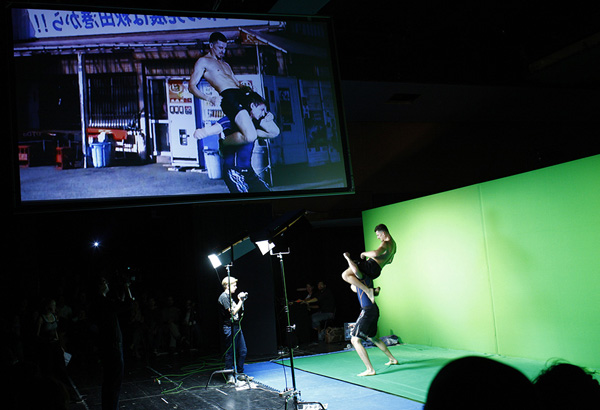
CM: I have been thinking lately about all of the ways that contemporary performance/art has a tendency to pull (ideas and/or people) from other places or social contexts outside of art, and I have been wondering how their unfamiliarity with that context may potentially change the work—especially with live performance…? Is this kind of “outsourcing” (in a sense) something that you feel fits into the larger scheme of your practice?
MC: We do come from a design and visual communications background so method of outsourcing seemed natural to us. We have always been obsessed with how are the things [are] produced and how they live in different iterations. So I would say it does fit into our general practice because we have often worked with other people like photographers, stylists, or DJs, for example with WorldWide Gallery Traxx. When we started working on this project we really didn’t want to work with actors or think about classical dramaturgy; it was more about finding people who are dealing with violence in different ways in their everyday lives. It is more interesting to us to use real ingredients than to act them out on stage.
DB: A lot of the aura of the whole performance in front of the audience comes from them and their natural appearance and behavior. They were a huge part of the process of making it, and we let them reenact scenes as they see them, using moves familiar to them and basing characters on heroes they could relate to. Then we taught them how to fake and reinforce all the hits and throws for the camera and the audience and mediate violence in completely different directions. The flow of the performance goes from the gentle, almost meditative scenes, which are fine-tuning violence with tai chi-like movements, slow motion and freezes, to more explicit, full-force fights, and then to movements used in commercials to emphasize the feel of real action.
MC: For some spectators, sporting events simply provide entertainment in the form of unscripted drama and tension, or the entertainment value may be related to an appreciation of athletic ability on display. In this way, sports are similar to the unscripted nature of reality television or the beauty and grace of ballet. We tried to translate that into an action movie and to create a chimera of all three things.
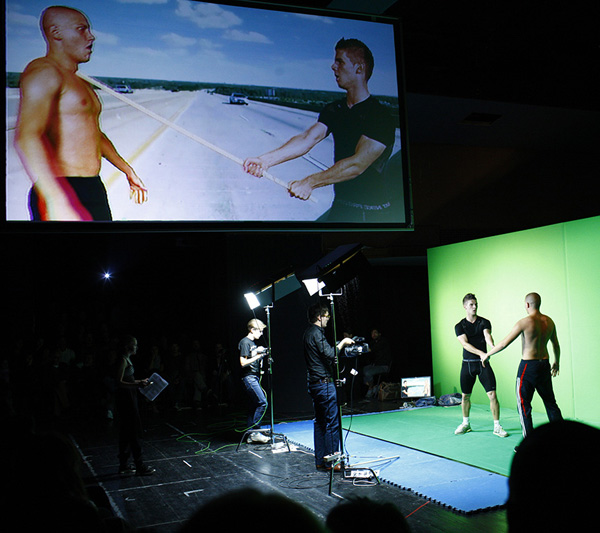
CM: And in addition to the five performers there were also other people that were part of the performance right?
DB: There are two camera people on the set, and the whole scene is set up to look like a studio production and a finished product. The movie on the screen is constructed in real time via a green keying technique. The audience sees the projection and the performance simultaneously but from different angles.
MC: We wanted to reveal how the production of the movie works, and have a performance that feels like it is “in progress” and not finished.
CM: Do you mean not finished because you never edited the footage afterwards?
DB: No, I mean because every performance is kind of a copy of a previous one—but more like a new version.
MC: The work is replicating, the actors change, moments are different, but the general idea is followed again and again.
DB: It is kind of a sequel and a copy at the same time; that’s what we were interested in. It refers to the phenomena of “Hollywoodification” and “mockbusters.” Translation through different cultural backgrounds and filters of generic and mainstream materials in a manner of Chinese whispers gives a culturally non-monogamous expanded view of the whole phenomenon.
CM: Would you consider it a parody in a sense?
DB: I wouldn’t consider it a parody because it is not making it funnier or making a joke out of it. It is more like an homage, somewhat similar to YouTube videos that are remakes or “answers to,” or where the music videos are “chopped and screwed.”
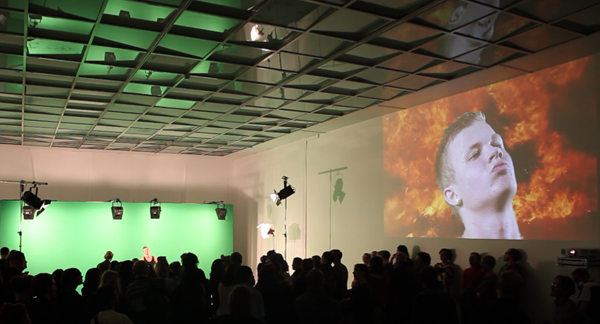
CM: Did you ever discuss or get any sense of the men’s feelings about those kinds of movies? I’m guessing people like them are the kind of people that are big fans of those epic action blockbusters… not to stereotype them.
DB: Yes, we talked about it a lot with them—why they like those movies and what they mean to them. They told us who were their heroes and why. Some of them have almost pubescent admiration towards their favorite movies and characters, and some of them are looking at it more from the technical side, admiring the physical skills.
CM: So although they may not have fully understood the context in which the performance was being framed by you or considered by the audience, they nonetheless were very familiar with the subject matter.
DB: Yes. They were experts on the subject, and they knew more than us when it came to movements and movie references.
MC: And all of the guys had different opinions about this “die hard” kind of character. In Berlin the men had an extremely regimented lifestyle and were very disciplined. They all worked as street fighters at illegal gambling places, but they ended up being the most open minded and relaxed. The Croatians, which were the youngest men we worked with, were extremely conservative. They all wanted to be in the army, and that is why they got involved in fighting. Some of the others were kind of lazy, so the violence never came through, but they had this picture of a superhero/diehard style they were really into. But overall it seems that fighting is a relief for them and a place for them to put their aggression.
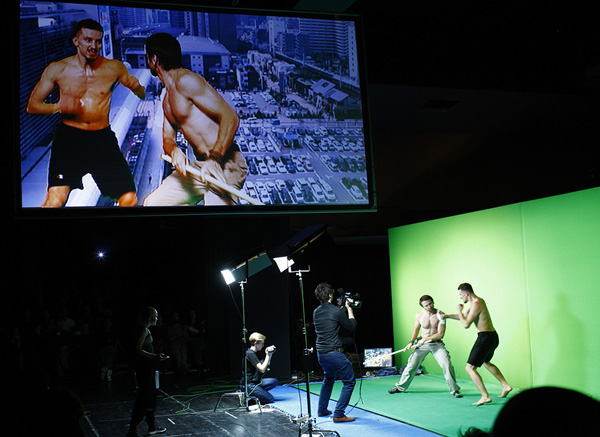
CM: What kind of direction did you give the men?
MC: Helga, the choreographer, is part of the show. She is giving the show a rhythm and naming scenes so the guys know when to change or move to different positions.
CM: I have to say, I am curious as to why you don’t have any excerpts from the videos on you site? Is this a performance that you feel can only be experienced live, or would you consider exhibiting the video in a future show, without the live aspect?
MC: We really think it only works live. The performers bring so much to the stage; it’s their first time, and there is so much non-descript energy aggregated in the air when you are present. The video always looks so much less exciting without that factor. We think of it like documentation. We use the videos to work on choreography and change some stuff for the next show.
CM: For me, since I am kind of obsessed with documentation, I think it sounds like it could be really interesting to see an edited video that compiles and splices together footage from all of the different performances. I really like the idea of being able to see the ways in which there is a certain structure that the work continues to adhere to as it moves forward.
MC: I think that’s a good idea; we’ve been thinking a lot about it.
CM: But at the same time, there are so many variables that fluctuate depending on the particular site/context, etc.
MC: We did editorial shoots with all the performers so far, and it’s hard to find the right context to publish those images.
CM: Yes, I wanted to ask about those and why you added the Chinese character watermarks.
DB: The movie that this project is based on is called Knockoff. It is from 1998, and it’s a really amazing and crazy Hong Kong and American co-production. The story revolves around Jean-Claude Van Damme’s character working in a knockoff jeans factory, and the basic plot begins when his partner discovers that the owners of the factory are putting nano-bombs into all of the knockoff products before shipping them to the U.S.
CM: Oh wow! I’ve never heard of this movie!
DB: The basic narrative of the performance is based on that, as well as the whole style in which it is put together because that movie connects a lot with the idea of the “mockbuster” production as well as that of counterfeit products and reinventing authentic experiences. In a more general sense, this project brings up the issue of the value and the copy and how it is regarded when something is intentionally not original.
MC: Yes, but it’s not really based on the movie; the movie served more like a base to build upon and as inspiration material. The two things that it influenced the most was the performance’s intense continuum of action scenes with generic dialogue, and this idea that each performance we do is a counterfeit of the previous one.
DB: We want to see under the title the subtitles written like on old cigarette packaging or fashion brands: New York – Paris – London.
MC: Only that in this case it is Berlin-Zagreb-Bergen; kind of off-the-list but very appropriate to the content.
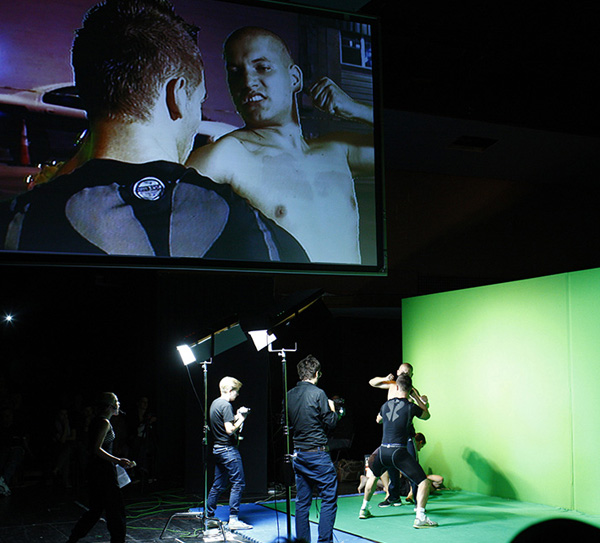
CM: How do you feel each of the three iterations has differed from the others? How has each “layer,” so to speak, shaped the work at this point in time, though it is still in progress?
MC: The background videos we used to superimpose changed a lot from the first show to the last. We started collecting YouTube amateur footage of crime scenes, accidents, breakthroughs, city panoramas, shots of parking lots, and rooftop scenes. It was very mixed but resembling the actual movie scenes. We wanted to keep it open and not aestheticized, so this material keeps growing. It’s like objet trouvé but online. All the videos are documentation, and we’re putting even more references into them, from the New Jersey break-in at the Apple store, to security camera video tests shot in L.A. We want it to be very extensive and include a large library of videos as backgrounds for the next version.
CM: Was the idea of “amateur” a focal point throughout the project?
MC: Yes. Well, kind of. Amateur for sure, but I think it’s also about production outside of the entertainment mainstream, referring to it and trying to copy it but with our own rules. It is definitely a part of the work because an amateur is generally considered a person attached to a particular pursuit, study, or science without formal training, also referred to as an autodidact—which all of the performers definitely were.
CM: Right. So maybe in this sense the idea of the copy and the amateur are particularly similar?
DB: Yes, the idea of the re-make, in terms of this particular project, was very connected to all the bootleg and mockbuster versions of popular movies. But in the way that “amateur” is not a dilettante but instead someone that does things based on obsession.
CM: So do you like these kinds of blockbuster action movies too?
DB: I do, but Maja doesn’t. But I have to say that I especially enjoy the American cult of watching movies and all of the hype and celebrity cult that is connected to it. In Europe it is so different. I used to watch only art movies. But here I have a feeling that this industry is really relevant and influences a whole new way of thinking.
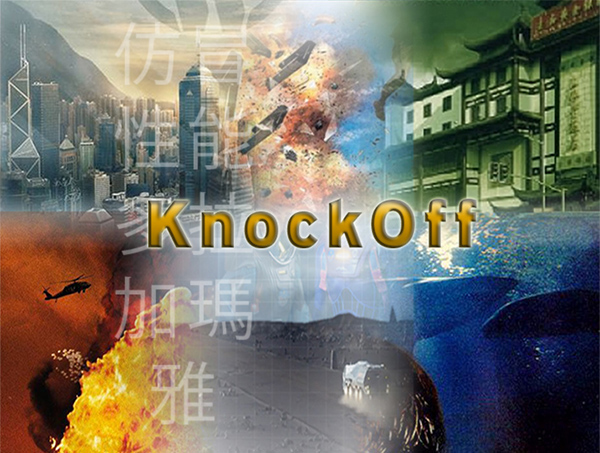
Performers:
Berlin/Germany: Hasan, Mesut, Murat, Sezgin, Zaman
Bergen/Norway: Alv, Knut, Michael, Ravel, Remi
Zagreb/Croatia: Edis, Mak, Marko, Matija, Tomislav, Veselin
Choreography: Helga Wretman
Music: M.E.S.H., Felix Lee
DP (Berlin): Miona Bogovic
DP (Bergen): Miona Bogovic / Camera 2: Tariq Hindic
DP (Zagreb): Srdjan Kovacevic / Camera 2: Matea Jocic
Video: Matea Jocic, Ilya Smirnov, Ivan Liik










































































